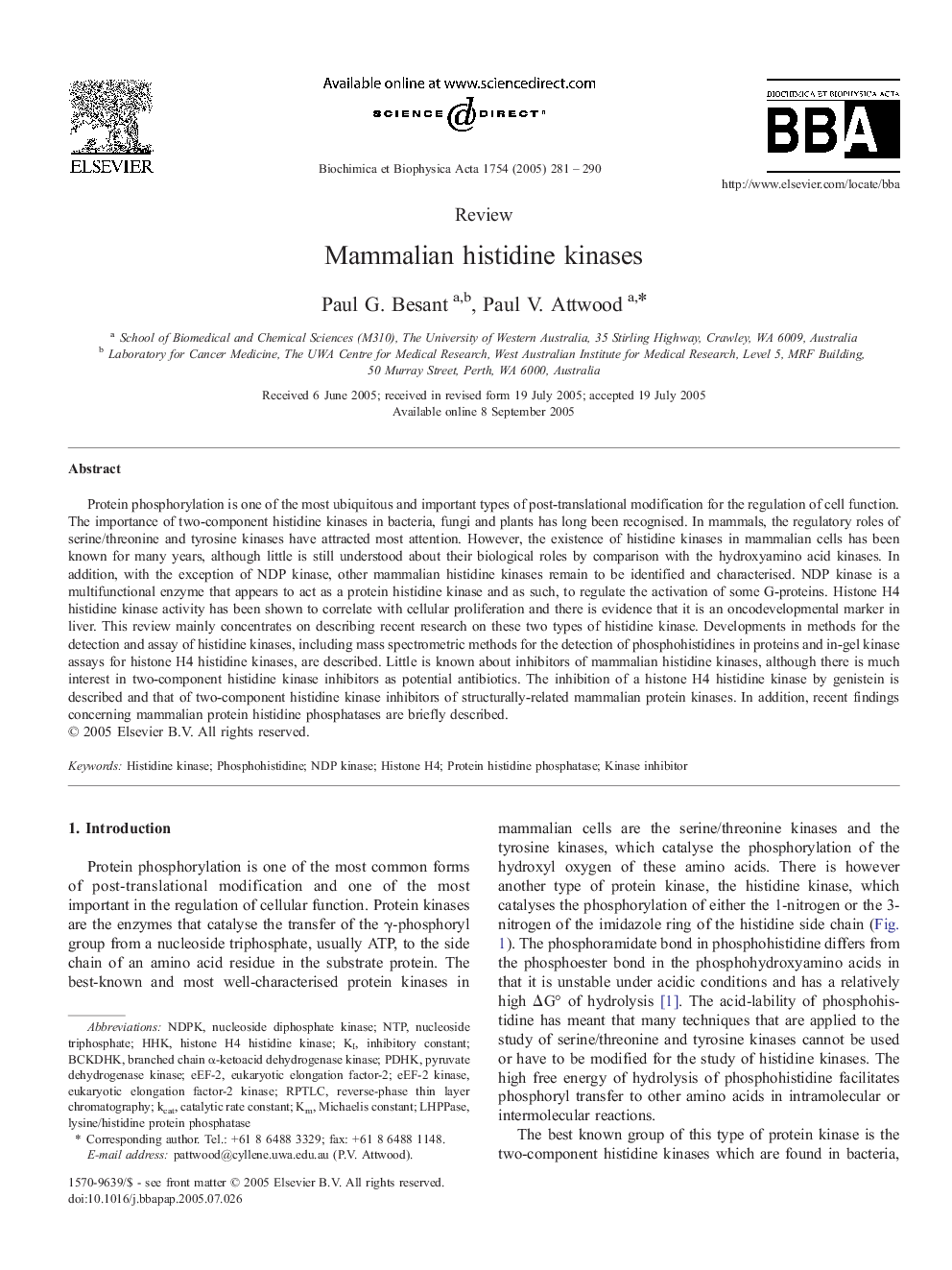| Article ID | Journal | Published Year | Pages | File Type |
|---|---|---|---|---|
| 9745096 | Biochimica et Biophysica Acta (BBA) - Proteins and Proteomics | 2005 | 10 Pages |
Abstract
Protein phosphorylation is one of the most ubiquitous and important types of post-translational modification for the regulation of cell function. The importance of two-component histidine kinases in bacteria, fungi and plants has long been recognised. In mammals, the regulatory roles of serine/threonine and tyrosine kinases have attracted most attention. However, the existence of histidine kinases in mammalian cells has been known for many years, although little is still understood about their biological roles by comparison with the hydroxyamino acid kinases. In addition, with the exception of NDP kinase, other mammalian histidine kinases remain to be identified and characterised. NDP kinase is a multifunctional enzyme that appears to act as a protein histidine kinase and as such, to regulate the activation of some G-proteins. Histone H4 histidine kinase activity has been shown to correlate with cellular proliferation and there is evidence that it is an oncodevelopmental marker in liver. This review mainly concentrates on describing recent research on these two types of histidine kinase. Developments in methods for the detection and assay of histidine kinases, including mass spectrometric methods for the detection of phosphohistidines in proteins and in-gel kinase assays for histone H4 histidine kinases, are described. Little is known about inhibitors of mammalian histidine kinases, although there is much interest in two-component histidine kinase inhibitors as potential antibiotics. The inhibition of a histone H4 histidine kinase by genistein is described and that of two-component histidine kinase inhibitors of structurally-related mammalian protein kinases. In addition, recent findings concerning mammalian protein histidine phosphatases are briefly described.
Keywords
NDP kinaseeEF-2eEF-2 kinaseeukaryotic elongation factor-2 kinaseNDPKNTPProtein histidine phosphataseKcatInhibitory constantCatalytic rate constantNucleoside diphosphate kinaseeukaryotic elongation factor-2phosphohistidineMichaelis constantKinase inhibitornucleoside triphosphateHistone H4Histidine kinasePyruvate dehydrogenase kinase
Related Topics
Physical Sciences and Engineering
Chemistry
Analytical Chemistry
Authors
Paul G. Besant, Paul V. Attwood,
